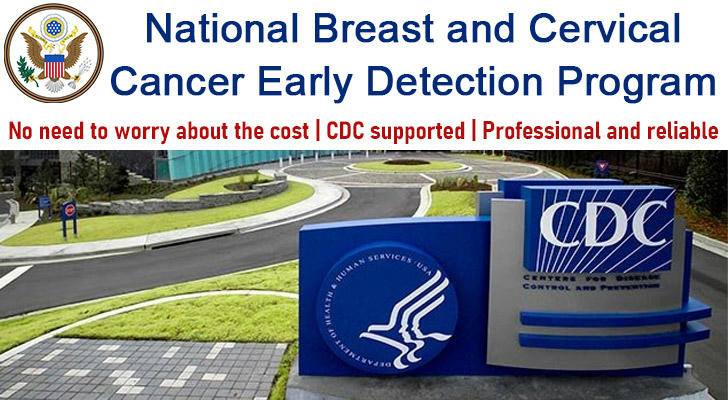🩺 Breast cancer screening in the United States: Official services benefit most women
📢 Officially provided | No need to worry about the cost | CDC supported | Professional and reliable
Breast cancer remains one of the leading health concerns for women in the United States. According to the Centers for Disease Control and Prevention (CDC), early detection through mammograms significantly increases the chances of successful treatment and long-term survival. The National Breast and Cervical Cancer Early Detection Program (NBCCEDP) is a public health initiative created to expand access to screening and diagnostic services for underserved populations.

This article outlines who should receive a mammogram, how women with breast implants are screened, and how federal and state programs support equitable access to this life-saving service.
📊 Why Mammograms Are Vital for Early Detection
A mammogram is a low-dose X-ray exam of the breast, capable of detecting tumors that are too small to be felt through physical examination. It can identify changes in breast tissue years before physical symptoms emerge, enabling earlier and often less aggressive treatments.
Clinical benefits include:
- Early tumor detection
- Reduced mortality risk from breast cancer
- Greater range of treatment options and fewer surgeries
The U.S. Preventive Services Task Force (USPSTF) recommends biennial screening mammograms for women aged 50 to 74, with individual considerations for women starting at age 40 depending on personal and family history.
🧍♀️ Screening Recommendations by Age
| Age Group | Recommendation | Notes |
|---|---|---|
| 40–49 | Optional based on individual risk and clinical discussion | Women with strong family histories or genetic predispositions may benefit from earlier screening |
| 50–74 | Strongly recommended every two years | Highest benefit group |
| 75+ | Individualized | Screening may be continued depending on overall health and life expectancy |
🔎 How Women with Implants Can Be Screened
Women with breast implants—whether for cosmetic or reconstructive reasons—can and should undergo regular mammograms. However, implants can make it harder to see certain parts of the breast tissue on a standard X-ray image. Therefore, special imaging techniques are used to ensure comprehensive examination.
Mammogram Process with Implants:
- Technician training: Radiologic technologists trained in imaging with implants will typically take additional views of each breast.
- Implant displacement views (Eklund technique): The breast tissue is gently moved away from the implant to be imaged more clearly.
- More time required: The procedure may take slightly longer but ensures thorough coverage.
Women with implants should always inform their imaging provider in advance, so proper planning and protocols can be followed.
🤝 How NBCCEDP Supports Access
The National Breast and Cervical Cancer Early Detection Program (NBCCEDP) has been operating for more than 30 years, helping extend access to early cancer detection services for women who meet specific eligibility criteria.
Who Is Eligible?
Women may qualify for screening services if they:
- Are aged 40 to 64 for breast cancer screening (or under 40 with symptoms)
- Lack adequate insurance coverage
- Meet household income guidelines set by the federal government
- Reside in a participating state, territory, or tribal area
What Is Included?
The program supports:
- Mammograms
- Clinical breast exams
- Diagnostic follow-up for abnormal results
- Patient navigation services, such as appointment assistance and follow-up tracking
NBCCEDP does not directly offer treatment, but it helps connect eligible patients to services such as Medicaid’s Breast and Cervical Cancer Treatment Program when needed.
🌍 Availability Across the U.S.
NBCCEDP operates in all 50 states, the District of Columbia, five U.S. territories, and 13 tribal organizations, ensuring widespread geographic reach. Each jurisdiction may administer the program slightly differently, including partnerships with local clinics, hospitals, and mobile mammography units.
🧠 Additional Screening Considerations
While mammograms are the gold standard for early detection, certain women may require additional imaging or clinical follow-up, especially if they:
- Have dense breast tissue
- Have personal or family history of breast cancer
- Carry BRCA1 or BRCA2 mutations
- Have prior abnormal mammogram results
In such cases, providers may recommend ultrasounds, MRIs, or more frequent screenings.
🧩 Empowerment Through Education and Access
Access to early detection services is a crucial factor in reducing health disparities. NBCCEDP is a government-supported initiative that aims to level the playing field for women facing barriers due to cost, lack of insurance, or remote location.
For women with implants or unique screening challenges, trained facilities are available to ensure proper procedures are followed. Patients are encouraged to maintain open communication with healthcare providers and imaging technicians to ensure the most effective experience.
✅ Summary
| Topic | Key Point |
|---|---|
| Target Age | 50–74 years most recommended; 40–49 optional |
| Women with Implants | Require additional mammographic views; screening is still essential |
| NBCCEDP Purpose | To extend access to screening and diagnostics |
| Supported by | U.S. Centers for Disease Control and Prevention (CDC) |
| Additional Resources | State health departments, tribal programs, FQHCs |
| Where to Start | Talk to a provider; check the CDC tool for a local clinic |
📞 How to Take the Next Step
- Visit CDC's Screening Locator
- Contact your local health department for eligibility guidelines
- Schedule a consultation with a clinic experienced in breast imaging
- Keep a regular screening schedule based on professional advice
Early detection saves lives—and programs like NBCCEDP ensure that structural barriers do not prevent timely access to essential care.
